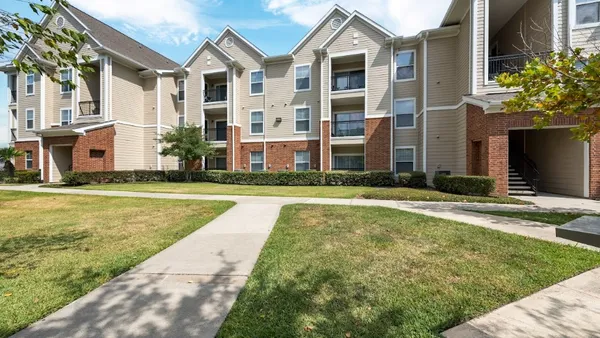This story is the fourth in a series of articles looking at how the rising cost of insurance is affecting apartment owners. Click here for part one, here for part two and here for part three.
For owners in coastal areas, paying for insurance is becoming increasingly untenable. In the past year, costs for coverage have increased as much as 500% in Florida.
Those premium hikes are enough to make owners like Carlos Imery, the chief operating officer with Coral Gables, Florida–based Beacon Real Estate Group, look for outside-the-box solutions.
“With windstorm [coverage requirements] in Tampa, I'm thinking about self-insuring,” Imery said. “Would I be able to get the lender to go with it? I don't know.”
Imery isn’t alone. Apartment executives and insurance advisors think lenders could help ease the insurance burden by adopting new risk models and allowing owners to self-insure. But that’s not the only outside help they say is necessary. Some also advocate for government intervention to stem the tide of insurance increases.
Taking on more risk
Danielle Lombardo, chair of the Global Real Estate Practice at Kansas City, Missouri–based insurance brokerage firm Lockton, wants her clients to consider their insurance options.

Instead of going to an insurance carrier and buying a policy with a $100,000 deductible, in some cases she advocates that owners funnel their risk into something else, such as a captive, which is basically their own insurance company.
But there's a significant hurdle. “The only thing holding owners back from doing that, which would help them continue to do deals, is lender insurance requirements,” Lombardo said. “This is the big issue.”
The last thing lenders want to do is to take big losses on multimillion-dollar properties they finance. But some in the apartment industry say their insurance requirements have become too onerous with properties often insured to cover losses that will never occur, according to a Yardi report released earlier this year.
“The disconnect between lender insurance requirements and the marketplace is a real issue,” Lombardo said.
Windstorm issues
One major pain point revolves around coverage for wind damage. Most lenders require full limits for wind or water damage for properties in FEMA-designated flood zones. They also mandate business income coverage for flood losses in addition to National Flood Insurance flood coverage, according to Yardi.
“Most lenders require full hurricane coverage on each asset or at least the largest asset in the portfolio,” said Lombardo, who leads a national group advocating reform of lender insurance requirements. “That essentially takes a broad-brush, conservative approach in a market where we really need to be more targeted and data-driven.”

For example, Lombardo cited a client with a $40 million asset in the coastal town of Corpus Christi, Texas. Full coverage on the property costs $3.7 million. But if the lender allowed a true probable maximum loss methodology that looked at historical data to project whether a storm would hit, the cost would fall to $1 million.
“It’s $1 million for the data-driven approach that's more targeted to what's actually going to happen versus $3.7 million,” Lombardo said. “That's the difference between foreclosure or a cash-flowing property. The real issue that we're having with the lending community is getting them on board with this approach so that our clients can stop the bleeding and they can continue to pay debt service [on their loans].”
Showing some flexibility
In its recent risk survey, the NMHC urged owners to negotiate as much flexibility as possible in all new loan agreements to plan for future volatility in the insurance market.
In some ways, lenders are adjusting. Typically, if a borrower defaults on a loan for insurance reasons, they are placed in an insurance program. But the difficulties with coverage are also limiting the bank’s options.
“They have to be willing to accept what we have because whatever their option was is not any better than what the market is dictating,” said Chris Conlon, director of risk management at St. Petersburg, Florida–based multifamily owner Mahaffey Apartment Co.. “So that's where you're getting a little bit more wiggle room.”
Even Fannie Mae and Freddie Mac are making some adjustments. “The agencies understand the problem, are seeing the problem and are listening to a certain extent,” said Doug Faron, the managing partner at West Palm Beach, Florida–based developer Shoreham Capital. “For example, they've loosened a two-year replacement reserve for lost income due to mass casualty events to one year, which obviously improves your premium, as one of the requirements to have an agency loan.”
Reducing litigation
Lenders aren’t the only ones who can help reduce the insurance burden. Political leaders may need to step in. “There needs to be, in states like Florida, Texas and others, some government involvement in terms of incentivizing private insurers to continue to do business in a world where there's just a lot of volatility and weather events,” Lombardo said.
Actions taken by state governments can impact pricing. For instance, in Florida, it was easy to sue insurance companies, and a large portion of nationwide property litigation is centered in the state, according to Yardi.

Conlon is hopeful that recent legislation that addresses tort reform and insurance in the state can help solve the problem. “Those are going to have meaningful reforms,” he said. “They should reduce the incentive to litigate claims furthering claims severity and they should increase competition over time.
Florida lawmakers also reformed the structure of Citizens Property Insurance, a state fund that can serve as the insurer of last resort primarily for homeowners. Although some observers would have liked to have seen more of a focus on apartments, others see it as a step in the right direction.
Faron is hopeful those efforts to fix insurance issues for homeowners could ultimately lead to solutions for apartment owners. “I think as individual homeowners are impacted, it will be something that's discussed more from a government-intervention level,” he said.
Click here to sign up to receive multifamily and apartment news like this article in your inbox every weekday.


















